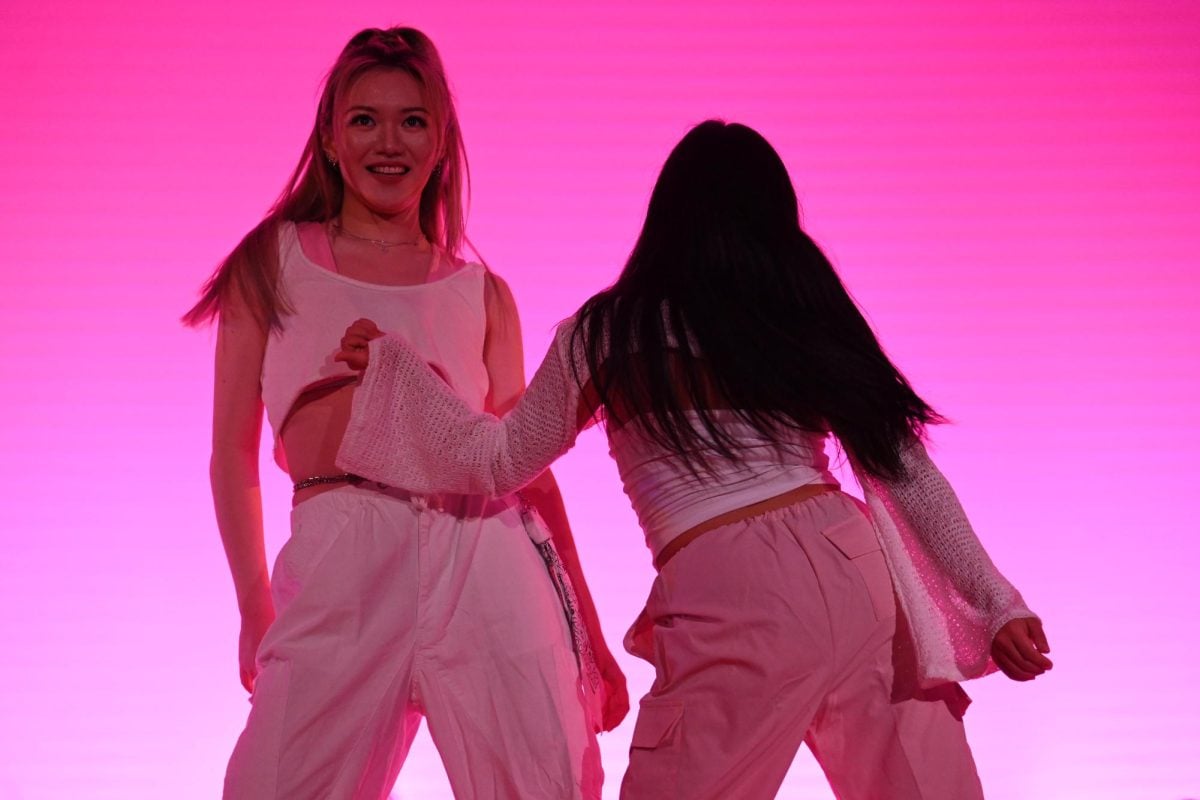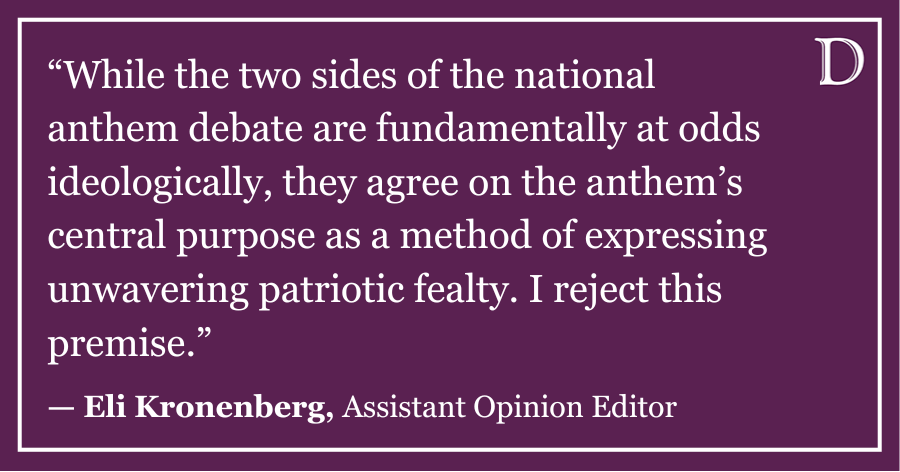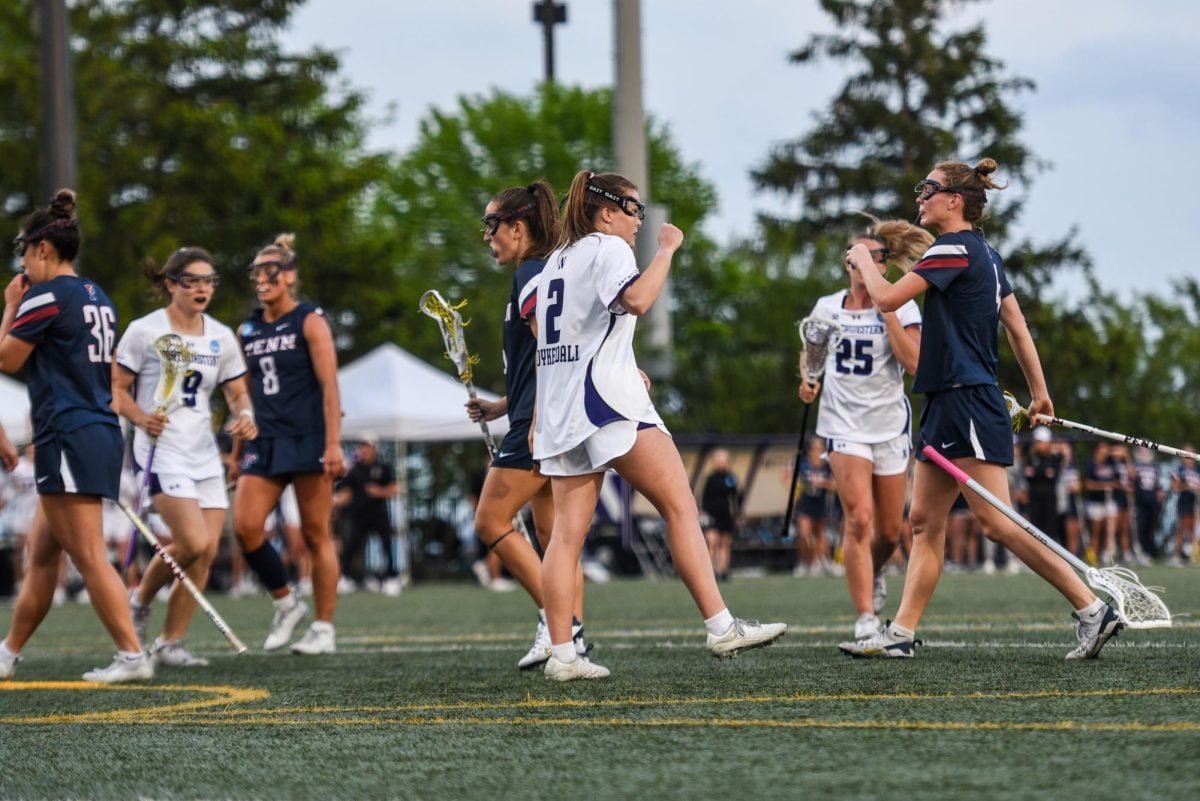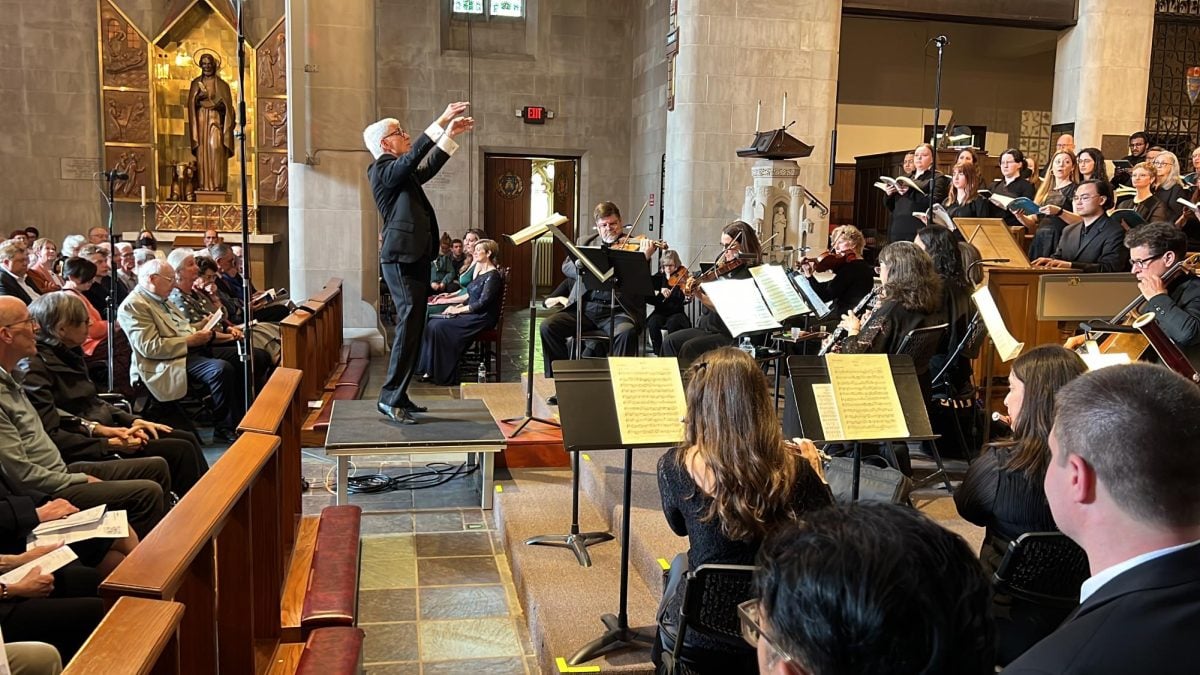The gentle sound of the bass section singers’ low C resonating through Pick-Staiger Concert Hall signaled the beginning of the Northwestern University Symphony Orchestra and combined Bienen choral ensembles concert Saturday evening.
The concert featured two major works: Ludwig van Beethoven’s Mass in C Major and Ralph Vaughan Williams’ “Dona Nobis Pacem.” More than 200 musicians from NUSO, the Bienen Contemporary/Early Vocal Ensemble, University Chorale, University Singers and Northwestern Camerata performed.
Each of the vocal groups occupies a different niche at NU. BCE is a small, highly selective chamber ensemble. University Chorale and University Singers are larger ensembles for Voice and Opera majors and skilled non-majors. Northwestern Camerata is an all-treble chorus open to students from all academic disciplines.
The first piece, Mass in C Major, premiered in 1807 and is a contemporary adaptation of the traditional Catholic mass. Beethoven heavily experimented with unconventional accompaniments and chromaticism to portray suffering and joy found within the traditional latin texts.
Bienen freshmen Sonya Lyons, a soprano in Northwestern Camerata, said she especially enjoyed singing the fugues in the Mass in C Major. A fugue is a style of music that uses counterpoint to intertwine melodies and harmonic gestures.
“The fugue had so much fun interaction between parts,” she said.
“Dona Nobis Pacem,” composed in 1936, consists of secular and sacred texts of the mass style calling for peace and love during times of conflict.
The piece, written while Vaughan Williams watched Europe descend into World War II, features texts from several sources, including a combat nurse in the Civil War, poet Walt Whitman and John Bright’s famous speech against the Crimean War in 1855.
Bienen sophomore Melody Zhang, a violinist in NUSO, said Vaughan Williams intended for the end of “Dona Nobis Pacem” to signal that the war is over and peace is restored, but she said she finds the ending to be foreboding.
“(The end) transitions right into an a capella of just the choir and the singers kind of saying, ‘Is it really the end? Are we really peaceful?’” Zhang said. “It forces the audience to think about what we have to do to prevent these kinds of atrocities from happening.”
Donald Schleicher, director of orchestras at the Bienen School of Music, conducted the Beethoven piece. Director of Choral Organizations Andrew Megill conducted the Vaughan Williams piece. Before the concert, the NUSO and choirs only rehearsed together in two three-hour rehearsals.
Megill and Schleicher previously collaborated together at the University of Illinois Urbana-Champaign. Now, in Megill’s first year at NU, the duo decided to work together again.
“When we first started working with (Megill), I noticed that (the orchestra) all felt inspired,” Zhang said. “He has so much energy, and the entire orchestra just caught on to that really quickly.”
McCormick junior Jacob Cox, a tenor in University Chorale, said while Schleicher and Megill have different conducting styles, he enjoyed working with both.
Lyons said Schleicher’s clear instructions about articulation and dynamics in rehearsals led to the choir’s success Saturday evening.
Medill sophomore John Ferrara said he enjoyed the concert in Pick-Staiger because it is a larger venue than the concert halls in the Ryan Center for the Musical Arts.
Ferrara also said the combination of the five Bienen ensembles was unique.
“It is the first time that I’ve seen a bunch of different choirs and orchestra come together to play,” Ferrara said.
Email: [email protected]
Related Stories:
— Seong-Jin Cho and the Chicago Symphony Orchestra dazzle with Beethoven, Mendelssohn and Kernis
— Community choirs come together for musical celebration of L. Stanley Davis
— Evanston Symphony Orchestra gives back through age-inclusive performances, education



















